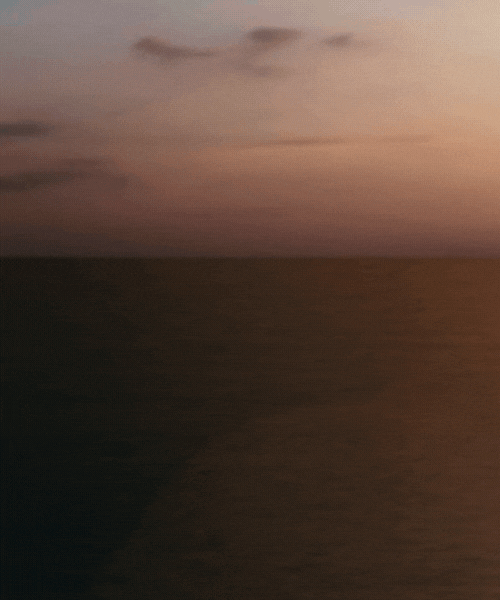The Arnala-class vessels can sprint for short bursts in order to maintain contact with any submarines they detect.
By Ajai Shukla
20th June 2025
Original in The Diplomat
Providing a much-needed shot in the arm for the Indian Navy’s capability to combat submarines in shallow waters, the first of a line of 16 indigenous anti-submarine warships was commissioned on Wednesday, June 18, at the Garden Reach Shipbuilders & Engineers (GRSE) shipyard in Kolkata.
The anti-submarine warship, Indian Naval Ship (INS) Arnala, was constructed through a public-private-partnership, a first in Indian shipbuilding, in which GRSE, a government-owned defense shipyard, collaborated with a private shipyard—Larsen & Toubro’s shipyard in Kattupalli, Tamil Nadu.
INS Arnala has the distinction of being the largest diesel engine waterjet-propelled warship to be inducted by the Indian Navy.
The Ministry of Defense (MoD) has contracted GRSE and Cochin Shipyard Limited (CSL), Kochi, to build eight of these vessels each. Their primary role, according to an MoD statement, is to “detect, track and prosecute enemy submarines, particularly in coastal and shallow water regions.”
Industry sources say the combined cost of all 16 Anti-Submarine Warfare Shallow Water Craft (ASW SWC) will come to about $1.6 billion, or approximately $100 million per vessel.
The 16 Arnala class ASW SWC vessels are smaller and have a shallower draft than the four anti-submarine warfare corvettes of the Kamorta class that GRSE built and delivered to the navy between 2014-2020.
The Indian Navy’s need for shallow water anti-submarine capability stems from the peculiar hydrological configuration of the Arabian Sea bed, which lies to the west of the Indian peninsula. These waters, which lie between Pakistan and India, are extremely shallow even tens of nautical miles from the coast. So gentle is the gradient of the Arabian Sea that even 40 nautical miles offshore from Pakistan’s naval base of Karachi, the seabed is just 40 meters deep.
In contrast to the shallow Arabian Sea, India’s eastern seaboard, facing the Bay of Bengal, is extremely deep, with the seabed falling precipitously as one moves away from the coast. This peculiar hydrological constraint forces the Indian Navy to maintain a dual ASW capability. The Kamorta-class anti-submarine corvettes operate in the deep waters of the Bay of Bengal and the Indian Ocean, while the Arnala-class ASW-SWCs hunt down enemy submarines in the Arabian Sea, where the shallow sea bed reflects sonar signals emitted by submarine hunters. This masks the signals reflected off enemy submarines, making them difficult to detect.
The induction of these 16 ASW-SWCs would help the navy protect India's 7,500-km coastline, 12 major and 184 minor ports, 1197 island territories and critical offshore hydrocarbon assets from enemy submarines. This will be the operating terrain of India’s new fleet of ASW-SWCs.
The Arnala-class ASW-SWCs are slated to replace in service the Indian Navy’s ageing Abhay-class corvettes. With over 80 percent indigenous content, the Arnala-class reflects India's growing self-reliance in shipbuilding and reduced dependence on foreign suppliers.
With three water jets (fitted to marine diesel engines), the INS Arnala is both fast and agile. A great advantage is that it only requires a draught of 2.7 meters, allowing it to access both the east and west coasts easily in search of sub-surface threats.
The ASW-SWCs are all equipped with sophisticated sonar, featuring an algorithm that differentiates between signals reflected off enemy submarines from those bouncing off the sea bed.
The Arnala-class vessels can sprint for short bursts in order to maintain contact with any submarines they detect. Making these submarine hunters even deadlier are their sophisticated data link networks, which share information about the enemy submarine with friendly anti-submarine warships and aircraft.
GRSE says these vessels can be used for search and rescue operations and, in their secondary role, for laying and detecting underwater mines.
These ASW SWC vessels’ comprehensive underwater surveillance suite contains advanced underwater sensors such as the Abhay hull-mounted sonar, an underwater acoustic communication system (UWACS) and low-frequency variable depth sonar (LFVDS).
To neutralize any underwater threats they detect, their state-of-the-art weapons suite includes lightweight torpedoes, ASW rockets, anti-torpedo decoys and advanced mine-laying capabilities.
The integration of sensors and weapons into the Combat Management System (CMS) and an Integrated ASW Complex (IAC) further enhances their combat capabilities.
Nuclear Versus Conventional Submarines
Most major navies, such as those of France, Russia, the United Kingdom and the United States, prefer an all-nuclear submarine fleet, with large submarines of 4,000 tons or more. France and Russia build conventional submarines only for export. For their own navies, they prefer an all-nuclear fleet, since running two different submarine types is prohibitively expensive.
The Pakistan Navy already possesses three sophisticated French submarines and is in the process of procuring four Chinese submarines. It has been pushing for ASWCs. Of even greater concern to India is Pakistan’s fleet of about six miniature Italian submarines – called the Chariot – which can operate very effectively in shallow waters.
In 2022, GRSE was awarded the Defense Minister’s Award for designing the Arnala, which was termed the “most silent ship.” The ability to operate in shallow waters makes these warships ideal for tasks close to the shore, such as patrolling, surveillance and humanitarian assistance.
GRSE is currently building 16 more warships, including three Project 17A advanced stealth frigates, seven ASW SWCs, two survey vessels and four Next Generation Offshore Patrol Vessels. In addition, the shipyard is building 24 other vessels, nine of which are export platforms.
Contracts for building 16 ASW SWC vessels were signed with GRSE and CSL in April 2019. Delivery was scheduled to commence from October 2022, with each shipyard delivering two ships per year thereafter. However, due to delays in construction, delivery is now likely to be completed only by 2028.







-1.png)













No comments:
Post a Comment